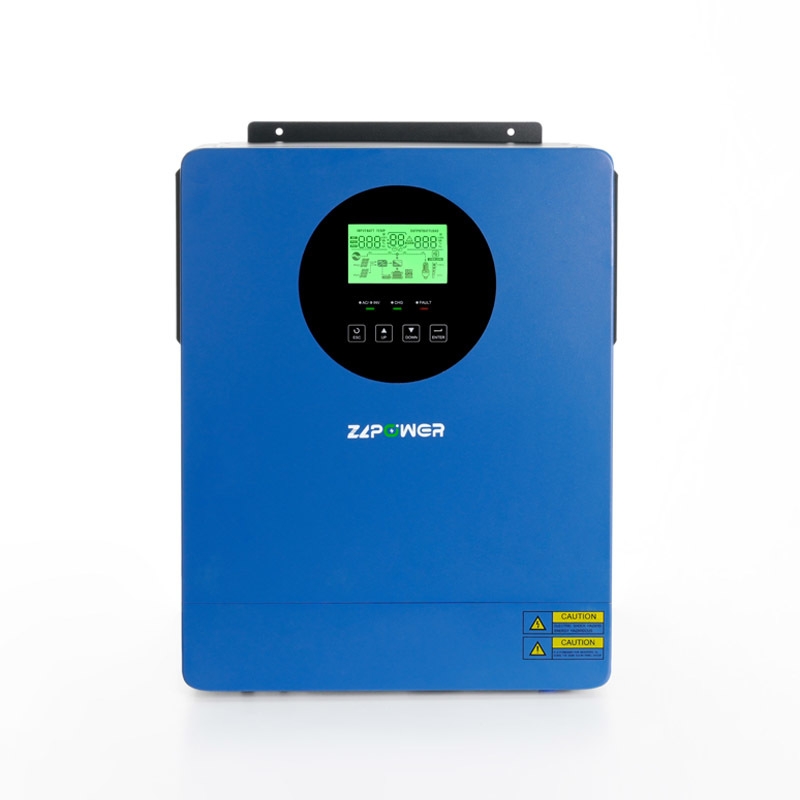

Solar inverters play a role in power systems by transforming the direct current (DC) generated by solar panels into alternating current (AC), the standard type of electricity used in household appliances. These intelligent solar inverters are specially designed to facilitate a conversion process, allowing homes to efficiently utilize the solar energy captured from sunlight.
Converting electricity is crucial as numerous household appliances operate on either AC or DC power from panels directly. Thanks to inverters that switch DC electricity into AC electricity, solar power becomes accessible for these devices. Moreover, this conversion allows any surplus energy to be redirected back to the grid when the system supports metering.
Solar inverters have a role that goes beyond simple conversion tasks, as they help enhance the power output of solar panels using advanced technologies like Maximum Power Point Tracking (MPPT). The PV generator comes with an MPPT charge controller to optimize and control the DC power generated by the solar array for charging the battery bank efficiently. This functionality guarantees that the panels operate at their peak performance level to maximize energy production.
In trying to establish if a 5-kilowatt solar inverter will solve the energy problem in the house, one must try to understand the pattern of energy usage. As usual, an average household consumes about 877 kilowatt-hours per month, which may vary based on factors like location, seasonality, and daily patterns.
That changes between some 5 kW for a small house and considerably more when the house is larger, complete with many different high-power appliances. Therefore, to ascertain your energy requirement, it becomes very critical that you actually first work out exactly how many watts is required for what appliance, for how often, and also for how much time in running it.
.jpg)
A regular 5000 watt solar inverter can handle 5000 watts of power at the same time and has an efficiency rating ranging from 90 to 95%. These inverters are great at converting DC input into AC output while reducing losses during the conversion process.
A 5-kilowatt inverter can power household gadgets at once, including refrigerators, lighting fixtures, and televisions. Nevertheless, energy-intensive devices such as air conditioning units or electric heaters might need capacity or smart management techniques to maintain seamless functioning without straining the system.
To sum up the discussion: grasping the role and significance of inverters in energy systems is key to assessing their effectiveness in meeting household needs. By analyzing usage trends and specific appliance requirements, homeowners can decide whether a 5 kW inverter is adequate or if modifications are needed to enhance their solar energy system.
The placement of a residence impacts the efficiency of a 5 kilowatt inverter in meeting the energy requirements of the household. Areas with sunlight such as regions close to the equator are capable of generating ample energy, potentially rendering a 5 kilowatt inverter sufficient for the households needs. In contrast, regions that receive sunlight or frequently experience cloudy weather may lead to a decrease in energy production. This situation may necessitate systems or additional energy sources to meet the households power requirements.
Household energy usage behaviors and the way people live have an impact in deciding if a 5 kilowatt solar inverter is suitable enough for their needs at home. Homes equipped with energy-saving appliances and mindful energy consumption practices might discover that a 5 kilowatt system is sufficient for their requirements, without any issues. On the other hand, households using high-energy devices or running multiple gadgets concurrently might need more power capacity. Being aware of these usage trends helps in determining if a 5 kilowatt inverter will be enough or if adjustments need to be made.
Using a 5 kilowatt inverter at home brings various advantages to homeowners. The inverter can supply electricity for typical household needs such as running refrigerators and lighting while easing the load on the power grid. It also comes with functions like Maximum Power Point Tracking (MPPT) to enhance energy collection from solar panels. PVG includes an MPPT solar charge controller that efficiently manages and boosts DC power from the array, for charging batteries. This guarantees functioning and optimizes the return on your investment.
A 5 kilowatt system offers benefits to households; however, it poses certain challenges worth noting as well. Air conditioners and electric water heaters with energy demands can overload the system during peak usage hours. Load management techniques or extra power sources may be needed to prevent overload in these scenarios. Moreover, sunlight availability influenced by factors can restrict the efficiency of a 5 kilowatt system in specific regions.
.jpg)
ZLPOWER provides energy solutions for a wide range of energy requirements beyond typical home setups. ZLPOWER is a recognized high-tech company that focuses on the design, manufacturing, and distribution of UPS power supplies, Power Inverters, and Solar inverters along with other offerings. Our products include online UPS systems and solar inverters tailored for diverse capacities and uses.
We prioritize quality and innovation to make sure our products work well in environments. Whether it‘s for homes or big industrial purposes, with these cutting-edge technologies in play, homeowners can tailor their energy systems to meet their needs effectively while also being mindful of efficiency and sustainability concerns.